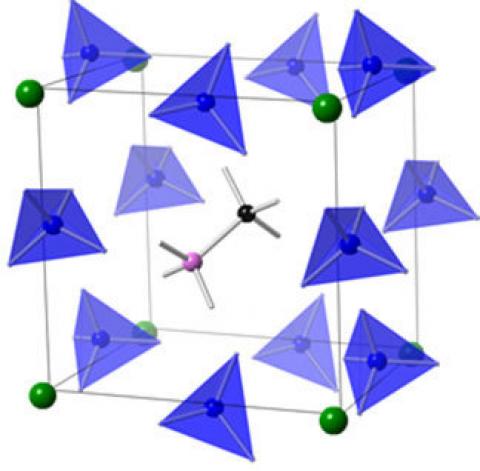Researchers at the Virginia Commonwealth University have identified how to control different properties and stability in perovskite-based solar cell materials using lead-free preparation. These new design principles identified super-ion building blocks, clusters of atoms that carry the same charge as the ions that they replace. Scientists can tailor these building blocks to improve stability and other desired traits, and may lead to the next generation of solar cells and optoelectronics for lighting and data storage.
 a hybrid perovskite structure where the super halogens are the blue tetrahedrons, the metal atoms are green, and the alkali cation is in the middle Read more: Materials based on clusters of atoms may revolutionize the whole solar cell industry
a hybrid perovskite structure where the super halogens are the blue tetrahedrons, the metal atoms are green, and the alkali cation is in the middle Read more: Materials based on clusters of atoms may revolutionize the whole solar cell industry
The researchers used a multi-scale approach and a comprehensive study of over 40 materials to identify parameters and mechanism that control properties and stability in lead-free hybrid perovskites. Scientists identified design principles that correlated the ionic nature of bonding to the electronic band gap and other photovoltaic-relevant properties. The team identified two methods to increase the ionic nature: using a smaller halogen to increase the radius ratio between super-ions and using a more metallic metal (tin compared to germanium). Also, they identified how the materials degrade when exposed to moisture and proposed counter strategies.
This new atomic-level understanding could lead to the development of more efficient and longer-lasting solar cells.